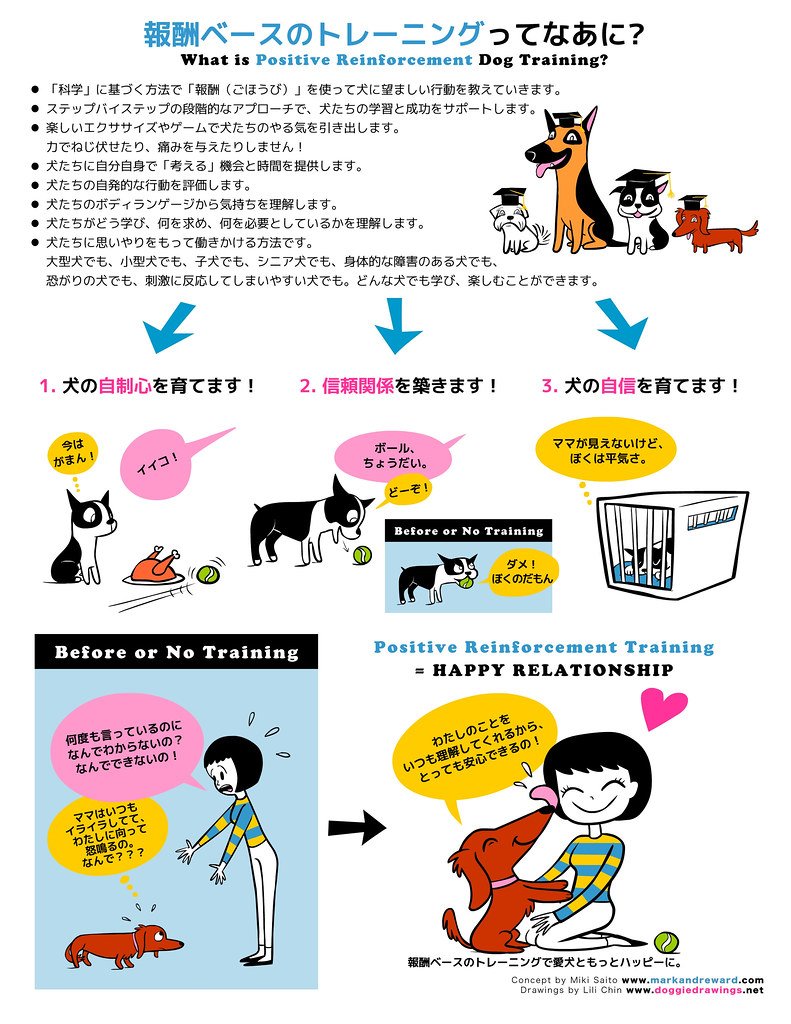They say a dog is a man’s best friend, but what about the furniture’s best friend? We’ve all been there - coming home to find our once-pristine couch transformed into a shredded masterpiece, or our favorite armchair with a new, stylish “distressed” look. It’s enough to make any pet parent’s heart sink. But fear not, for there is hope! With a little patience, consistency, and the right strategies, you can teach your furry friend to curb their furniture scratching habits, preserving the harmony and beauty of your home. In this article, we’ll explore the wonderful world of dog training for furniture scratching, offering valuable insights and expert advice to keep both your pup and your prized possessions happy. So grab a comfy seat (that your dog hasn’t gotten to yet), and let’s embark on this journey to maintain a home where wagging tails and pristine furniture can coexist.
Table of Contents
- Understanding the Root Causes of Furniture Scratching by Dogs
- Effective Training Techniques to Prevent Furniture Scratching
- Creating an Optimal Environment to Discourage Furniture Scratching
- Positive Reinforcement: Reward-Based Training for Dogs
- Safeguarding Specific Furniture Items from Scratching
- Q&A
- Insights and Conclusions

Understanding the Root Causes of Furniture Scratching by Dogs
Dogs and furniture scratching seem to go hand in paw, leaving countless pet owners frustrated and puzzled. Unraveling the reasons behind this behavior can help us find effective solutions that keep both our furry friends and our beloved furniture happy.
Misdirected Energy: Dogs are bundles of energy, and when that energy gets bottled up, it often finds an outlet in destructive behaviors like furniture scratching. Regular exercise and mental stimulation through interactive toys and games can help redirect their energy, reducing the urge to use your precious couch as a scratching post.
Anxiety and Stress: Just like humans, dogs can experience anxiety or stress, and they may resort to scratching furniture as a way to self-soothe. Identifying the triggers of anxiety in your pup, whether it’s separation anxiety, fear of loud noises, or changes in their environment, can allow you to address and alleviate their distress, thus curbing the destructive scratching.
Unsatisfactory Nail Care: Untrimmed nails can be a primary culprit behind furniture scratching. Overgrown nails not only make scratching more tempting but can also cause discomfort to the dog. Regular nail trims are essential for maintaining their overall well-being and reducing the likelihood of furniture damage.
By understanding the underlying reasons for furniture scratching, we can take proactive measures to minimize this behavior in our beloved furry companions. Remember, it’s not just about protecting our furniture, but also ensuring our dogs lead happy and fulfilled lives.
Effective Training Techniques to Prevent Furniture Scratching
Furniture scratching is a common issue that many pet owners face. While it can be frustrating, there are several effective training techniques you can use to address this behavior and help protect your furniture.
1. Provide Alternatives: One of the best ways to prevent furniture scratching is by offering appropriate alternatives. Invest in a variety of scratching posts and pads, placed strategically around your home. Encourage your pet to use these alternatives by sprinkling catnip on them or using interactive toys that simulate prey. Consistency is key, so make sure to praise and reward your pet when they choose to use the designated scratching areas.
2. Cover and Protect: If you have furniture that particularly tempts your pet or is difficult to keep them away from, consider using protective coverings. There are various options available, such as plastic shields, sticky tapes, or even simple blankets or throws that can deter scratching. These temporary measures can help break the habit and redirect your pet’s attention to their designated scratching areas.
3. Training with Positive Reinforcement: Training your pet to avoid scratching furniture requires patience and consistency. Whenever you catch your pet engaging in the unwanted behavior, gently redirect them to an appropriate scratching area and provide praise and rewards when they use it. Positive reinforcement, such as treats or verbal praises, can go a long way in teaching your pet the desired behavior. Patience is key, as it may take time for your pet to fully grasp the concept and develop the habit of using the designated scratching areas.
By implementing these effective training techniques and providing alternatives, you can effectively prevent furniture scratching and maintain a harmonious environment for both you and your pet. Remember, consistency and positive reinforcement are key elements in successful training.

Creating an Optimal Environment to Discourage Furniture Scratching
It’s no secret that our furry friends can sometimes have a tendency to scratch on furniture, causing damage and frustration. However, with some simple measures, we can create an optimal environment that will help deter this behavior and keep our furniture looking its best.
- Provide appropriate scratching posts: One of the most effective ways to discourage furniture scratching is to offer your pets an alternative. Invest in a sturdy scratching post that is tall enough for them to stretch fully. Be sure to place it in a prominent location, near their favorite furniture spots, and encourage them to use it by gently guiding their paws and rewarding them with treats or praise when they choose to scratch the post instead.
- Protect your furniture: Use furniture covers or throws to shield vulnerable areas from your pet’s paws. This not only helps to prevent scratching but also adds a layer of protection against fur and dirt. Opt for durable materials like microfiber or leather, as they are less prone to damage and easier to clean.
- Keep claws trimmed: Regular nail maintenance is essential in preventing excessive scratching. Get into the habit of trimming your pet’s nails every few weeks or consider using soft nail caps for cats. Keeping their claws at an appropriate length will reduce their urge to scratch as a means of self-grooming.
Remember, discouraging furniture scratching takes time and patience. By implementing these strategies and consistently reinforcing positive behavior, you can create an optimal environment that promotes healthy scratching habits and protects your beloved furniture.

Positive Reinforcement: Reward-Based Training for Dogs
When it comes to training our furry friends, the power of positive reinforcement cannot be overstated. Reward-based training for dogs has proven to be not only effective but also a much kinder and compassionate approach compared to outdated methods. At its core, positive reinforcement focuses on rewarding desirable behaviors rather than punishing undesirable ones, creating a harmonious bond between dog and owner.
One of the key benefits of reward-based training is that it builds trust and strengthens the connection between humans and their beloved canines. By using treats, praise, and play as rewards, dogs learn to associate good behavior with positive outcomes. This approach not only enhances their obedience but also boosts their confidence and overall well-being.
- Gentle Approach: Positive reinforcement techniques focus on gentle correction rather than harsh punishments. This allows dogs to learn at their own pace and in a stress-free environment.
- Effective Results: Research has shown that dogs trained using reward-based methods are more likely to retain what they have learned and exhibit long-lasting positive behaviors.
- Enhances the Bond: By utilizing positive reinforcement, we strengthen our bond with our dogs and create a loving and trusting relationship based on mutual respect.
So, the next time you embark on your training journey with your four-legged companion, remember to choose positive reinforcement. It’s a win-win approach that not only brings out the best in your dog but also celebrates the unique connection between human and canine.
Safeguarding Specific Furniture Items from Scratching
Furniture items are an integral part of our homes, adding comfort, functionality, and style to our living spaces. However, constant use and the presence of pets or children can make our cherished furniture susceptible to scratches and damage. To preserve the beauty and longevity of specific furniture items, here are some creative and effective ways to safeguard them from scratching:
- Cushion Covers: For sofas, chairs, or any furniture with fabric upholstery, consider using cushion covers. These protective covers not only add a stylish touch to your furniture but also act as a shield against scratches. Choose covers that are durable, easy to clean, and fit snugly over your cushions.
- Scratch-Resistant Coatings: Certain pieces of furniture such as coffee tables, dressers, or dining tables are more prone to scratches due to their exposed surfaces. Applying a scratch-resistant coating can provide an extra layer of protection against daily wear and tear. Look for high-quality coatings specifically designed for the material of your furniture.
- Clear Vinyl Protectors: Transparent vinyl protectors are an excellent solution to safeguard wooden tables or desks. These peel-and-stick covers adhere to the surface, preventing scratches caused by sharp objects or accidental spills. Their discreet nature ensures your furniture’s beauty remains uninterrupted.
- Train Pets: If you have furry friends at home, it’s essential to train them to avoid scratching furniture. Provide designated scratching posts or pads for your pets, encouraging them to redirect their scratching instincts away from your beloved furniture. This not only protects your items but also promotes healthy pet behavior.
By implementing these creative methods, you can protect your furniture from potential scratches and keep them looking their best for years to come. Remember, prevention is key when it comes to maintaining the longevity and beauty of your furniture.
Q&A
Q: Why do dogs scratch furniture?
A: Dogs may scratch furniture due to various reasons, such as boredom, anxiety, or the need to mark their territory. Understanding the underlying cause is crucial in addressing this behavior.
Q: How can I prevent my dog from scratching the furniture?
A: Firstly, provide your dog with plenty of mental and physical stimulation to prevent boredom. Additionally, offer them appropriate alternatives to scratch, such as scratching posts or mats, and use positive reinforcement to encourage them to choose those over your furniture.
Q: Should I punish my dog for scratching the furniture?
A: No, punishment is not an effective solution. Instead, it can create fear and anxiety in your dog, escalating the problem. Focus on redirecting their behavior, rewarding appropriate scratching, and using positive reinforcement to discourage the unwanted behavior.
Q: How can I protect my furniture from scratches?
A: There are several ways to safeguard your furniture. Consider using furniture covers or throws, applying deterrents like double-sided tape or aluminum foil, or using specially designed pet-friendly furniture protectors. Additionally, regular nail trims and nail caps can help minimize damage.
Q: Can training classes help with furniture scratching?
A: Yes, training classes can be beneficial in addressing furniture scratching. They provide an opportunity to learn effective techniques, gain professional advice, and socialize your dog with other canines. Training will help redirect their energy and focus, reducing their urge to scratch.
Q: Are there any breeds more prone to furniture scratching?
A: While any dog can develop a furniture scratching habit, certain breeds, such as terriers or hounds, may have a higher predisposition due to their natural instincts and energy levels. However, with proper training and attention, this behavior can be managed in any breed.
Q: How long does it take to train a dog to stop scratching furniture?
A: The duration of training varies depending on several factors, including the dog’s age, breed, and previous training. Consistency, patience, and positive reinforcement are key. While some dogs may learn quickly, others may require more time and practice to break the habit.
Insights and Conclusions
As we bid farewell to our endeavor to preserve the sanctity of our homes from the clutches of furniture scratching, we are reminded of the incredible journey we have embarked upon. From unraveling the mysteries behind our furry friends’ mischievous antics, to uncovering the secrets of effective dog training, we have witnessed transformations that have breathed new life into our beloved homes.
Throughout this article, we have dived deep into the canine psyche, exploring the underlying reasons behind furniture scratching and how it can be curbed. We have delved into the world of positive reinforcement, understanding that patience and consistency can work wonders in shaping our furry companions’ behavior.
With a neutral tone, we have explored various training techniques, shedding light on the importance of redirecting our dogs’ energy towards approved alternatives, providing them with an outlet for their natural instincts. From scratching posts to interactive toys, we have discovered the keys to unlocking their true potential.
Yet, beyond the realms of training, we have also expounded on the significance of understanding our dogs on a deeper level, forging an unbreakable bond built on trust and mutual respect. We have stressed the importance of enriching their lives with mental and physical stimulation, ensuring that they are content and fulfilled companions.
As we conclude this article, we can now proudly embrace a home adorned with couches and chairs free from the relentless scratches of our four-legged friends. We are armed with a comprehensive arsenal of knowledge, ready to tackle any furniture scratching predicaments that may come our way.
Let us revel in our victories, celebrating the newfound harmony that emanates through our abodes. May our homes remain a sanctuary of peace and tranquility, preserving the beauty of our cherished furniture while providing a loving and nurturing environment for our faithful canine companions.
As we bid adieu, may the lessons learned here remain etched in our minds, guiding us towards a future adorned with well-behaved and contented pets. Remember, with compassion and determination, we hold the key to preserving the serenity of our homes and creating a bond with our dogs that transcends the boundaries of furniture-scratching woes.
As an affiliate, my content may feature links to products I personally use and recommend. By taking action, like subscribing or making a purchase, you’ll be supporting my work and fueling my taco cravings at the same time. Win-win, right?
Want to read more? Check out our Affiliate Disclosure page.